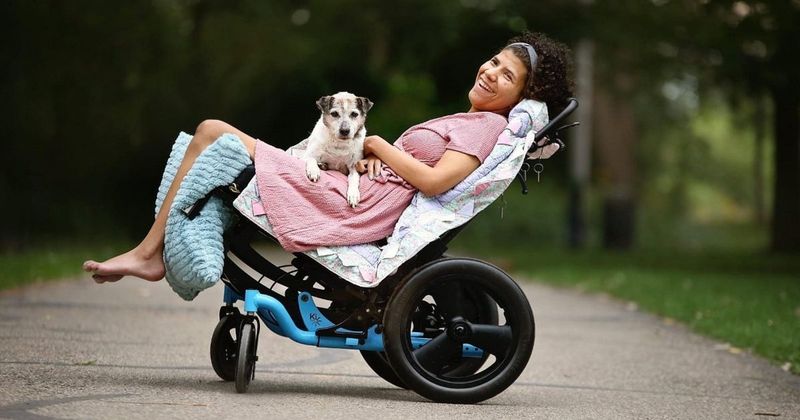BLOG: My Patients, My Heroes – Mariah’s thumbs up
This is another post in the series “My Patients, My Heroes” that I dedicate to my patients.
This post is about Mariah.

After 2 weeks of severe illness since admission, Mariah’s condition began to improve, and she became more alert, afebrile and less short of breath. She began to respond, in her own way, to my verbal communication. Since admission, I was talking to her sister, Kati, and mother, Lori, about how Mariah was doing, and they would tell me how she had been doing since the prior day. At that point, 2 weeks into her hospitalization and showing signs of improvement, after talking with Katie and Lori, I looked at Mariah. She purposefully returned my look.
“How are you doing, Mariah?” I asked. I was so touched when Mariah moved her hand and gave a thumbs up.
That thumbs-up response made my day.
Mariah began to improve; she was no longer in grave condition. There was hope that she would survive.
Mariah, aged 27 years, was diagnosed with multiple sclerosis at age 16 years. She had the rapidly progressive form of MS, and she ultimately became quadriplegic, bed-ridden.

Progressively, MS began affecting Mariah’s central nervous system and cranial nerves. Mariah has since lost most of her motor muscle functions, apart from partial movement of her hands. She ultimately became non-verbal.
When responding to a question about how she was doing, she would give a thump-up for positive responses. But Mariah would continue to smile and continued to use her hands, to make a thumbs-up gesture when asked to.
I was on the endocrine hospital call during the early days of the peak of the COVID-19 pandemic in Michigan around mid-April. I went with our fellow on-call to see Mariah in the COVID unit, in an ICU bed. Mariah was COVID-suspect. Her COVID-19 test was pending at the time. Earlier in the pandemic, COVID-19 tests would take longer than currently.
In the greater Lansing area, like other communities around the country, we were all new to the pandemic; there were many unknowns about to-dos and not to-dos. But early use of PPE was universal. We went through the strenuous ritual of fitting for N95 masks — it took 30 minutes in my case, as I continued to taste the sweet spray through the nylon tent suggesting a leak.
There were two large COVID units in the hospital. There were several COVID-19 patients, some on ventilators and some not. In the Lansing area, we were blessed that COVID-19 did not hit us as hard as it hit the Detroit area. Therefore, as endocrinologists, neither we nor our fellows were deployed to the frontlines to treat COVID-19 cases, but we have been consulted for endocrine problems throughout the hospital, including COVID-designated floors and critical care units.
Mariah was so gravely ill that I had confessed to her family that she may not make it. She had a mysterious acute illness that to this day still eludes me.
Mariah was brought to the hospital for worsening shortness of breath and fever. In the first 24 hours of admission, we all thought she had COVID-19. Multiple specialties were consulted. Because of severe tachycardia, in the 170s, Mariah underwent thyroid function testing; her labs showed severe hyperthyroidism. Because she was non-verbal, and for other factors, it was difficult to diagnose Mariah’s case. Did she have Graves’s disease? We initially thought she could have a severe case of thyroiditis associated with COVID-19.
Mariah’s COVID-19 test came back negative.
We were not sure what caused Mariah’s severe hyperthyroidism. It is beyond the scope of this post to detail the puzzling thyroid case. We managed her hyperthyroidism with multiple therapeutic modalities.
Mariah began to respond.

We were all blessed that after 2 weeks of supportive and specific therapy, Mariah began to improve, and she made incredible progress. Details of her medical case will be written later in a scientific paper as a case report.
Mariah’s sister and mom told me that she was adopted when she was an infant. Mariah is so loved and cared for by her family. After discharge from the hospital, I was following her thyroid case via telemedicine.
The two major communication tools with Mariah during her illness and to this day have been her thumbs-up and her smile!
